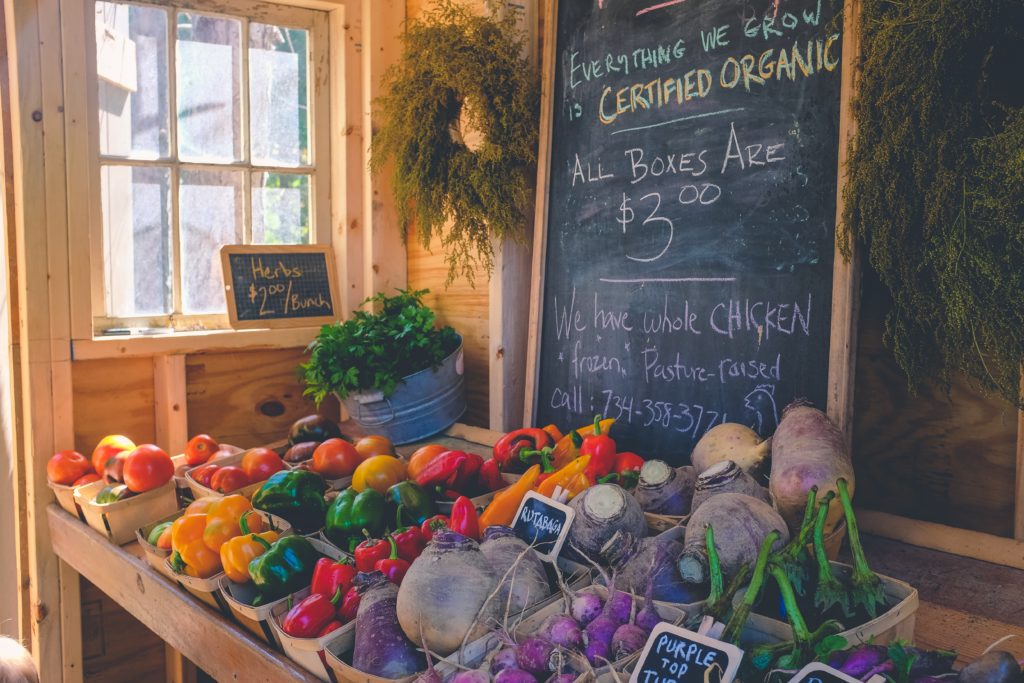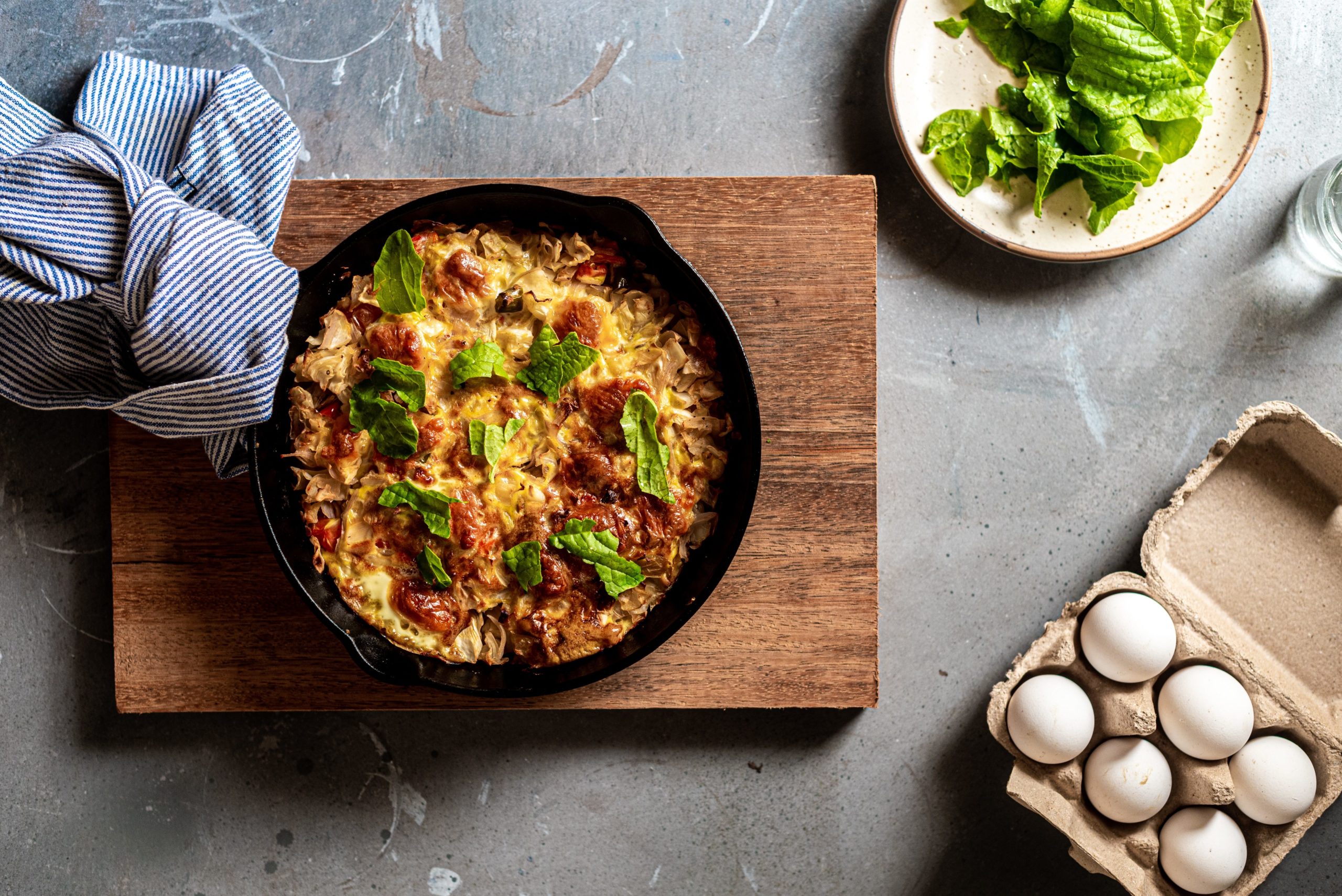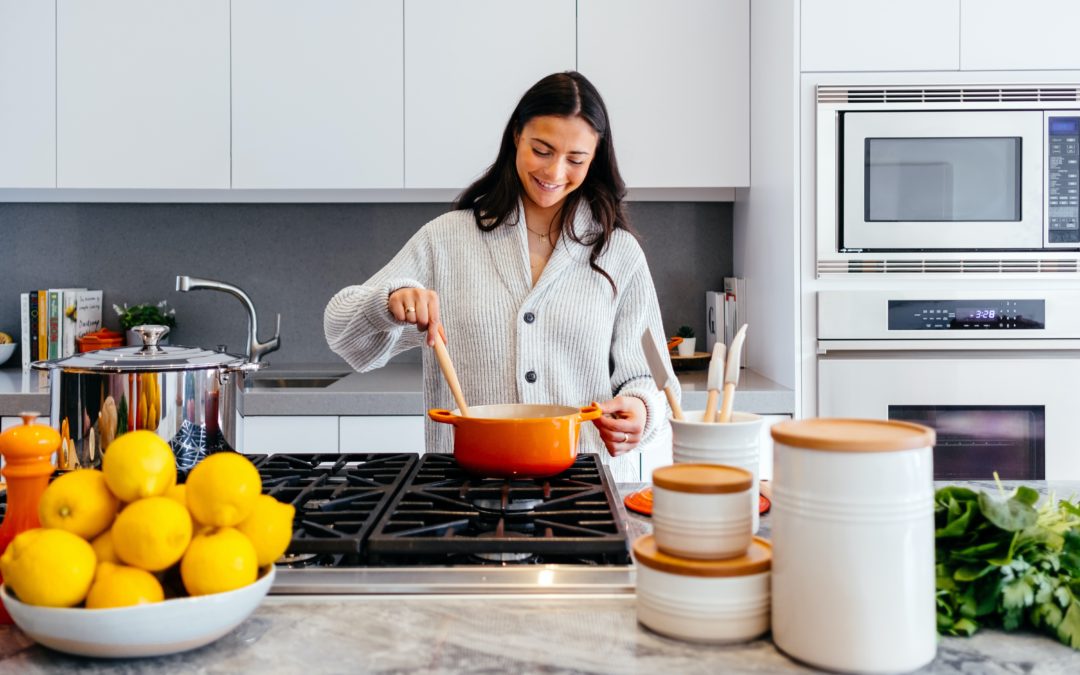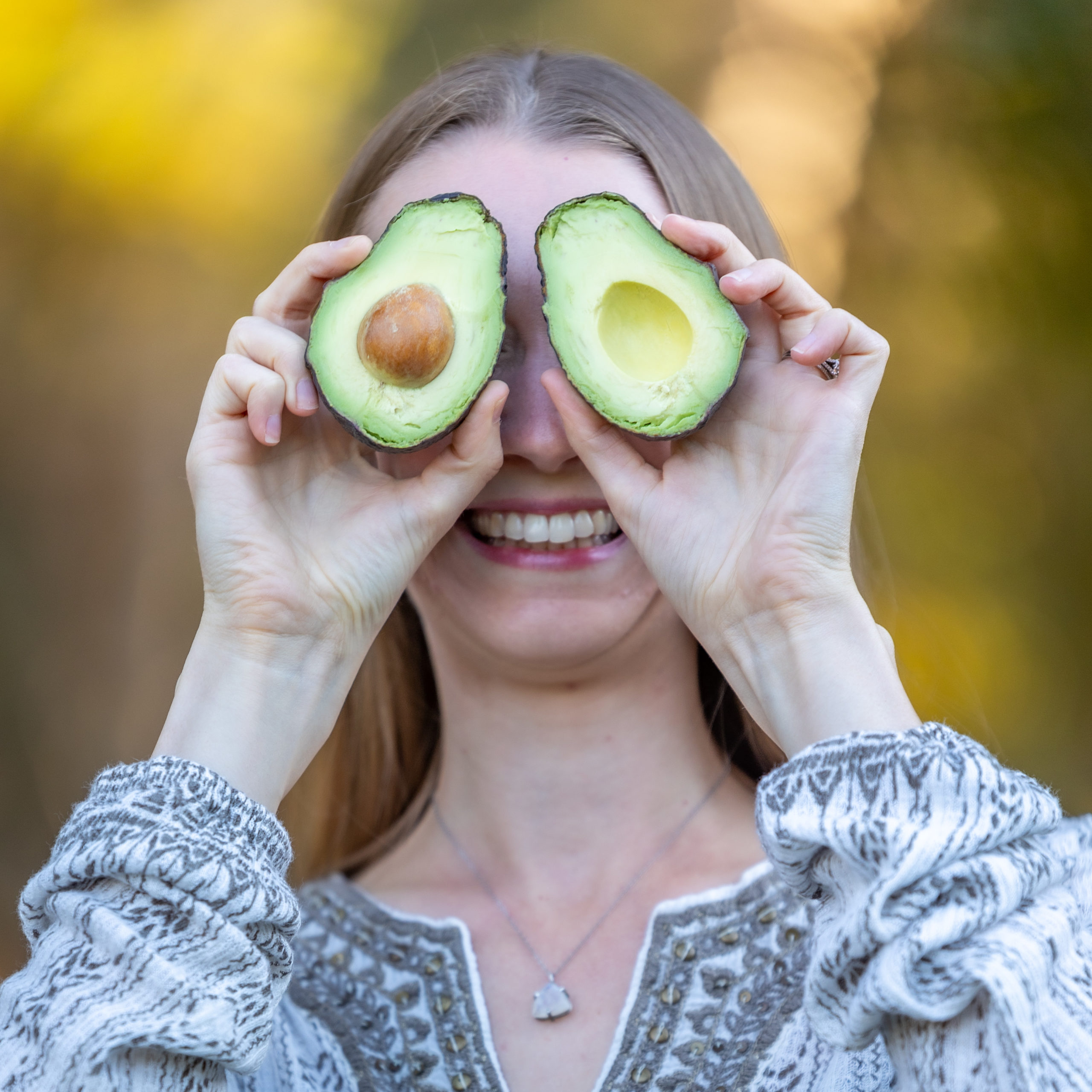Here’s the thing. Life is messy. It’s complicated. Cleaning it up can be a challenge, but I am here to guide you and make it simple! When it comes to working to heal your body with endometriosis, toxins are an important piece of the puzzle.
Life is full of toxic chemicals. Sitting here thinking of all the different foods, beverages, personal care products, cleaning products, household products, and even the air we breathe can feel so overwhelming. That’s why I have decided to break this post into two parts. Today was are going to focus only on our kitchens. It is such a wonderful place to start because that is where we spend so much of our time. That is where our food is prepared and where we connect with our loved ones. The kitchen is where the magic happens!
What do endometriosis, toxins, and your kitchen have to do with each other?
Our home is our main living environment. We may not be able to change everything around us everywhere we go, but at home we are in full control of what comes in and what doesn’t. What our bodies take in from our environment can either be healing or harmful or anywhere in between.
As a Nutritional Therapy Practitioner, I help my clients use food, water, and targeted supplementation to bring health and harmony to their bodies. All of this work is beautiful, but if there are toxins in your environment it can render most of it moot. There are many ways that toxins can affect our bodies and many ways we can come in contact with them. One major form of disruption that toxins cause in our bodies is endocrine disruption. This means that the toxins either mimic hormones in the body or block their proper function. These are known as “Endocrine Disrupting Chemicals” and there are many well-studied and well-known ones that we can make it a point to remove from our environments.
One common class of endocrine disruptors is known as “xenoestrogens.” Xenoestrogens mimic our body’s natural estrogen and can block estrogen receptors. According to the World Health Organization, xenoestrogens and other Endocrine Disrupting Chemicals (EDCs) are suspected to alter reproductive function in both males and females, increase risk of breast cancer, and lead to abnormal growth patterns and neurodevelopmental delays in children. So the short story is, these are chemicals we want to steer clear from in our day to day lives.
Since endometriosis is affected by estrogen, staying away from these xenoestrogens is especially important for endo warriors.
EDCs can be ingested through food or water, inhaled, or absorbed through the skin. So together today we are going to take a good look at our homes to see how we can remove as many of these chemicals as possible. Today’s focus will be on the kitchen, but stay tuned for Part 2 coming next week where we will discuss cleaning up our personal care, cleaning products, laundry, and more.
Endometriosis, toxins, and food
What better place to begin when it comes to cleaning up our kitchens than with our food itself? There is no sense in having a wonderfully clean kitchen with amazing cooking tools, pots and pans, and storage without first taking a look at the actual food we are putting into our mouths.

GMOs
GMOs are Genetically Modified Organisms. They are living organisms that have been artificially manipulated in a laboratory through genetic engineering. Plants are bred for traits such as being able to withstand herbicide, protection from browning, etc. The impacts of this on our health are still being studied, but it is generally best to avoid GMO crops.
There is a wonderful group called the Non-GMO Project which certifies certain crops as being non-GMO. You can look for their label on packaged foods!
Buy organic when possible
The best choice for produce is to buy organic. Non-organic, or conventional produce contains pesticide residue, even after being washed. These chemicals are known carcinogens and have many harmful effects on our bodies, reproductive health impacts being just one of them. The Environmental Working Group (EWG) puts out a very helpful guide each year after studying the data released by the USDA. They put out a list of the most chemical-laden produce, known as the “Dirty Dozen” which should always be purchased organic when possible as well as a “Clean Fifteen” list of the produce with the least amount of chemicals. You can find the full report and guides by clicking here.
Now it is often true that organic produce costs more than conventional and it shouldn’t be overlooked that that can be an issue for some. This is where the Dirty Dozen/Clean Fifteen lists can be helpful if only some of your produce can be purchased organic. Another option is to connect with local farmers in your area, either at a farmer’s market or through a CSA. It is important to know that many small-time farmers may not have the organic certification because this is very expensive for them, but if you chat with them directly many of them will be happy to give you some insight as to how their produce was grown. Many actually use less pesticides or herbicides than conventional growers.
Yet another option is to experiment with growing some produce yourself! I myself have done a little dabbling in this and although I am no master gardener, it is a lot of fun and so rewarding to have fresh, organic food right in my own backyard. Organic seeds are generally inexpensive and once you have your garden set up, if you have the space, it can continue to yield fresh fruits, veggies, and herbs for years to come!
Food Additives
Beyond produce, another piece of the puzzle to look at is food additives. These would be found in packaged foods, which we learned in my article on cleaning out your pantry are maybe not your best friend anyway for a variety of reasons. Food additives that have known adverse health effects include, but are not limited to: colorings, flavorings, preservatives, triclosan, pesticides, and glyphosate.
Endometriosis, toxins, and cooking tools

Let’s continue our journey by taking a look at the tools that you use to cook your food. This includes your cooking utensils and pots and pans in particular. One major component to look at here is plastic. Plastic can admittedly be hard to avoid in our modern world, but if we can at least get it out of our kitchens and away from our food as much as possible that will be a big help.
BPA is a chemical found in plastic such as water bottles, can linings, cashier receipts, and plastic containers. Even those labeled “BPA Free” still contain related chemicals BPS, BPF, BPAP, BPAF, BPZ, and BPB which can be just as harmful if not more so than BPA. These, along with Phthalates which is what makes plastic flexible and durable have been associated with endocrine disruption and possibly linked to infertility, reproductive cancers, and even metabolic disorders like PCOS.
Take a look at items such as cooking utensils, cutting boards, measuring cups and spoons, and any other plastic items you may have. See if you can slowly begin to replace these with safer materials like silicon, stainless steel, glass, wood, or bamboo. Start with anything that comes in contact with heat, like your cooking utensils.
The other piece to consider is your pots and pans. Do any of your pots and pans have a non-stick Teflon coating? Start making plans to get rid of them. That non-stick coating is highly toxic and when it is heated and/or scratched those toxins are released directly into the food you are so mindfully and lovingly preparing.
Safer options include cast iron, which can be found inexpensively, stainless steel (look for nickel free), or ceramic coated pans like GreenPan, Always Pan, and Caraway. This of course will be a more expensive undertaking so take it one step at a time. What is the pan you use most? Can you find a good replacement for that? And then go one at a time as you are able to afford it.
Ditch the plasticware
The same thing goes here with the plastic. Can you stick with silverware and ceramic or glass plates, bowls and cups? Is it possible to ditch the plasticware, and plastic plates, bowls, and cups? On occasion at a summer barbeque won’t be the end of the world, but if you can avoid these on a daily basis that will be your best bet.
On the go? Look for a stainless steel or glass water bottle, stainless steel travel coffee mug, and even a reusable travel silverware set.
Dump the plastic food containers
Yep, you guessed it, plastic again. All of those plastic food storage containers, plastic bags, plastic wrap, etc? Ditch ‘em. You will want to replace these with glass or stainless steel food storage, silicon bags, and plastic wrap alternatives like Bee’s Wrap or silicon multi-size lids. It is especially important again to avoid hot food coming into contact with plastic. This causes the plastic to release more chemicals into your food.
What about the soap?
We will dig deeper into cleaning products in Part 2, but since we clean our dishes typically in the kitchen we will go ahead and get a head start. Whether you use you dishwasher or are handwashing, be sure to choose a cleanser that is toxin-free so that after all of that hard work you put in to make sure your food and the things you use to prepare it are toxin free don’t go to waste. EWG to the rescue again here with a wonderful “Guide to Healthy Cleaning.” Click here for the dishwashing list.
You did it!
Like many of the changes we will make together, this doesn’t need to happen all in one day. Building a cleaner kitchen is a long-term project and it can take some trial and error to find replacement products that you like. If you can afford to dump everything in your kitchen and just start from scratch, great! If not, that is totally okay.
I hope that reading this today did not leave you in a place of fear, but empowerment. The more you know, the more you are able to control the environment around you and take your health into your own hands.
If I can do it, you can do it too!
Much love and happy healing!
Looking for support in your healing journey with endometriosis? Ready to finally ditch the pain and fatigue and finally thrive again? Click here to learn more about my Thrive With Endo program and apply today!
References:
National Institute of Environmental Health Sciences. (2022). Endocrine Disruptors. Retrieved from: https://www.niehs.nih.gov/health/topics/agents/endocrine/index.cfm
Non-GMO Project. (2016). GMO Facts. Retrieved from: https://www.nongmoproject.org/gmo-facts/
Environmental Working Group. (2022). EWG’s 2022 Shopper’s Guide to Pesticides in Produce. Retrieved from: https://www.ewg.org/foodnews/summary.php
Nutritional Therapy Association (2021). Environmental Factors Student Guide [PDF Document].
Soave, I; Caserta, D; Wenger, J-M; Dessole, S; Perino, A; Marci, R. (2015). Environment and Endometriosis: a toxic relationship. Retrieved from: https://pubmed.ncbi.nlm.nih.gov/26125255/


